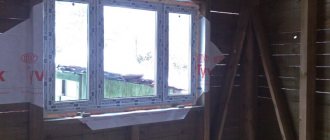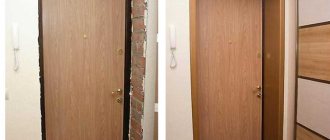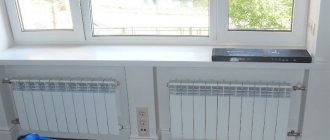The creation of residential building projects, from the general design to the calculation of the placement of heating radiators, is regulated by state building codes and regulations. It is SNiP that is the main document on the basis of the provisions of which the building design is developed. But this is for new buildings, but what about houses built back in the 40-50s of the last century? Or with the projects of multi-storey panel high-rises that were so popular in the 70-80s? Especially when apartment owners replace old wooden windows with plastic ones with new window sills. In this case, you need to carefully study the regulatory documents and, in accordance with them, plan work on how to install a heating radiator under the window.
Types of heating systems
There are three options for radiator connection systems - serial, single-pipe, two-pipe and collector (parallel). They differ in the wiring diagram. Depending on what system is installed, it is necessary to select the type of batteries. It is important to remember that incorrect connection of heating radiators leads to a decrease in the actual thermal power of the batteries.
Serial connection
This is the simplest option for connecting radiators. From the heating device the pipe passes to the first radiator, from it to the second, etc. This connection option has become obsolete, since the water cools quickly and the heating level drops sharply with distance. There is no option to turn off an individual battery - you have to shut off the entire system.
A clear example of serial connection of radiators.
Single pipe system
A single-pipe system uses one main pipe through which heated water or other coolant flows from a heating device (heat pump, boiler, boiler, etc.). Each battery is connected in such a way that the liquid passing through it returns to the main line.
The radiator can be turned off using a valve or shut-off valve without shutting off the main pipe. The water temperature in each subsequent radiator drops, but not as significantly as with a series connection.
Two-pipe system
The supply of heated water and the discharge of cooled water in the system occurs through different mains. Each radiator is connected to both pipes. In such a system, the temperature of the liquid at the inlet of each radiator is almost the same; it decreases slightly due to heat loss in the pipes.
Collector (parallel) system
In this system, all batteries are connected in parallel. One line comes out of the heating device, which is connected to the collector (popularly called a comb). In the collector, water is distributed through several pipes, each of which leads to a separate radiator. The shut-off valves are located on the manifold.
Collector or parallel heating system
The collector system can work in conjunction with any other. For example, several radiators connected to each other in parallel using a single-pipe or two-pipe system can be connected to the main line with warm water leaving the collector. The number of heating radiator sections depends on the selected system and type of connection. You can calculate them using an online calculator.
Connection diagrams
There are several radiator connection diagrams that comply with the requirements and standards of GOST and SNiP. They are represented by the following varieties:
- Lateral connection. Characterized by maximum heat transfer. With this connection, the input is made from the top of the battery, and the output is from the bottom on the same side. This is the most popular connection diagram.
- Diagonal connection. Produced with significant system dimensions. Water enters the radiator through the top and is discharged from the bottom on the opposite side.
- Lower connection or “Leningradka”. It is produced in small one- and two-story houses, as well as when installing pipes hidden under the floor. The efficiency of such a system is 5-15% lower than with a lateral connection.
When pipes are in a rough screed, heat loss increases due to contact with concrete and the ceiling covering of the lower floor.
Correct installation of heating radiators in a niche
It happens that in apartment buildings there is a niche for old cast iron radiators. This method of installing heating batteries is ineffective, but sometimes there are no other options. Therefore, let's consider it too.
- The distance between the side and rear walls of the niche to the radiator should be at least 5 cm.
- Air access from below should not be difficult, as well as its exit from above. The distance from the bottom and top of the radiator to the walls should be more than 10 cm.
Decorative grille Installing decorative grilles reduces the efficiency of the radiator.
The loss of thermal power can reach 20%. should promote convection. An overlay made of diagonal strips is best suited. It is better not to cover the gap in the lower part of the radiator with a grille to ensure optimal air convection. If the niche is made in a parapet located along the wall, it is better to cover its upper part with a decorative lattice rather than a solid overlay.
The battery in the niche under the window should be located so that there is a distance to the window sill. It should be twice as large as the window sill protrudes from the wall. For example, if the window sill extends 15 cm beyond the wall, the distance from it to the niche should be 10 cm.
The radiator in the niche under the window should be positioned so as to ensure good air convection. There should be at least 10 cm between its top and the edge of the niche.
This decorative grille will provide good air access to the radiator and completely hide it.
conclusions
It is always necessary to maintain the correct distance from the wall to the heating radiator, regardless of the design of the product, its shape or other operational characteristics.
It does not matter what kind of heating system in a house or apartment: single-pipe or two-pipe, central or autonomous heating. In any case, space is needed for heat exchange between the air and the radiator.
If this rule is not followed, the energy efficiency of the heating system will be significantly reduced and the radiators will have a shorter service life. As a result, costs for energy resources, repairs or replacement of heating system components will increase.
How to properly install a battery under a window
The greatest heat loss occurs through windows. Therefore, correct installation of the battery under the window is especially important.
- The radiator must be located exactly in the middle of the window - this way it will cut off cold air. The main task of the radiator located under the window is to create a thermal curtain. It will not allow cooled air from the window to enter the room. and will not allow it to spread throughout the apartment.
- The installation height of the radiator from the floor should be 5-10 cm. If the gap is larger, a layer of cold air will form. If less, it will be difficult to clean under the battery.
- The distance from the wall should be at least 5 cm so as not to impede air convection. Otherwise, the battery will heat the wall of the building and not the room.
Important
If the radiator is equipped with air cutoffs (see photo), the distance from it to the window sill should be more than 5 cm. If the window sill is wide and protrudes beyond the radiator, for every 1 cm of this difference you need to add 2 cm to the gap between it and the battery.
Such a radiator will remove warm air so that the window sill does not interfere with its circulation
For radiators without an air cutter, the minimum distance to the window sill is 10 cm plus 3 cm for every 1 cm of protrusion. Installing heating radiators under the window close to the window sill will interfere with air convection. And this will lead to a decrease in heat transfer.
If the distance between the window and the floor is too small and it is not possible to comply with the standards described above, it is better to install a low radiator with a large number of sections. This way you can avoid excessive heat loss and heat the room more efficiently.
You can read more about the issue of arranging a niche in the article “How to properly recess batteries into the wall without heat loss”
Location and dimensions
The ideal option is when the radiator has the same width as the window opening.
Then the heated air rising from the battery will completely block the access of cold air. But in this case there is one caveat.
If the number of radiator sections is too large, the room will be too hot.
To avoid this, you can install a battery with low sections.
There are options on the market with a height of 300 mm - they are ideal for solving the problem.
You can install a standard radiator with a section height of 500-600 mm, but in this case it must be placed exactly in the middle under the window opening.
An expert answers your questions
What is the best way to install batteries in a niche or on a wall?
If you want to hide the radiator, it is better to install it in a niche. But keep in mind that it must be made according to the rules; it is best to install a heat-reflecting screen in it.
When you make a niche in an exterior wall, you will reduce its thickness. If a house or apartment is poorly insulated from the outside, this will lead to heat loss. In addition, a thin wall will not support a heavy battery.
Do you need a niche for heating radiators? Do you need a niche for the battery?
There is no need for a niche as such. With its help you can hide the radiator and put a decorative grille on top.
Where to put the batteries if the house has large windows?
If you mean windows that start from the floor, then you need to place it directly in front of the window (see photo). If the windows are of normal height, but wide, panoramic, you need to install radiators under them. There will simply be more of them. Calculate so that there is one radiator for every 2 linear meters of window.
How to properly position heating radiators in a private house?
The installation rules are the same for both a private house and an apartment. The only difference is the large number of external walls. Try to make the wiring so that all the batteries stand along them.
Most heat loss occurs in the corners where two exterior walls meet. You should definitely install a radiator there. It may be small, 3-4 sections, but it is necessary.
Why do they put batteries in the corner?
This is done only in those corners where two outer walls meet. It turns out that in a small area there is a large area of walls through which heat escapes. And these losses need to be compensated somehow.
How to properly install batteries under plastic windows?
It makes no difference whether you place them under plastic or wooden windows. You just need to correctly calculate the number of sections. The smaller the window area and the greater the number of chambers, the less heat escapes through it.
Do heating radiators need to be placed flush with the edge of the window sill?
If your window sill does not extend beyond the edge of the wall, this can be done. But imagine how ugly such an arrangement will look? In addition, the lower the radiator is located, the more evenly the room warms up.
If you want to ask your question, do so in the comments.
Window sills for plastic windows
PVC window sills are most often installed on plastic windows.
Wooden window sills are installed less frequently. And very rarely, stone window sills are installed. The latter have their own installation specifics. We will not talk about them in this article. How to install a wooden window sill on plastic windows? The technology for installing plastic and wooden window sills is not fundamentally different. Therefore, further, we will only talk about methods for installing PVC window sills.
For those who first decided to install a window sill with their own hands, it is important to know that the quality of the window sill plastic affects the installation process. If you intend to work with an economy class window sill (for example), then you need to treat it with care
For example, when cutting such a window sill with a jigsaw, large chips may appear.
Where can you buy a PVC window sill in St. Petersburg at an affordable price? - read in this article. Below, for comparison, I give approximate prices for a window sill for plastic windows measuring 250 x 2000 mm:
- Inexpensive and not high quality - “Eco” - 350 rubles.
- Inexpensive, but high quality - “Stained glass” - 450 rubles.
- Expensive and high quality - “Stained glass VPL” - 1250 rubles.
- Very expensive and very high quality - “Danke”, “Moeller”, 2200 rubles each.
Useful recommendations from professional installers
When installing heating radiators, you should not skimp on components. The longevity of the entire heating system often depends on the quality of the taps, fittings, and seals.
It is imperative to install shut-off valves in the radiator supply area. This is a necessary condition for the ability to carry out regular technical inspection and cleaning if necessary. If in the future you want to replace radiators with newer models, this will not be difficult to do - just shut off the flow of coolant.
Decorative screen
If radiators look unaesthetic, violate symmetry, or interfere with the intended composition, decorative grilles come to the rescue.
It is better, of course, that it is not a cheap screen cover from a store, but a box made according to individual parameters in accordance with the features of a particular interior. By “juggling” sizes and colors, you can achieve the best result: create symmetry, balance an area, veil a structure or, conversely, make it a focal point.
For example, here we created symmetry using the screen. The decorative box turned into an element of the TV wall.
If you independently determine the design of the structure, it will best suit the interior. You can make it classic or modern-minimalist, give it industrial style features or endow it with some ethnic motifs. In general, the screen can be very successfully integrated into the interior - so that it looks not like a necessary measure, but like a carefully selected part of the decor.
Autonomous heating devices
As the heating season begins, the room temperature begins to drop. Turning on a heating boiler in a private home is not always profitable from an economic point of view. Waiting until centralized heating starts working is also not an option for many.
To maintain comfortable microclimatic parameters in your living space, you can purchase an additional heating device in advance. The modern market offers a large selection of similar units, among which you can choose an analogue that will suit you in terms of cost and power. Design and other parameters.
In our online store you can choose:
- air conditioning with heating function;
- infrared heater;
- fan heater;
- convector;
- electric fireplace;
- oil heater;
As you can see, when installing radiators, various parameters must be taken into account. In order for the heating system to work smoothly, you need to choose the right type of batteries and connect them correctly. If you are planning to change the heating system in your home, contact us. We will tell you which one to choose and how best to place the radiator.
Where is it better to place a radiator with panoramic glazing?
Panoramic windows make the room more spacious, lighter, and add more comfort. Therefore, even at the design stage, many people prefer this type of glazing. But floor-to-ceiling windows create additional problems when designing a heating system.
The larger the window area, the greater the heat loss.
Solutions for heating a house with panoramic windows are as follows:
- low radiators (floor radiators - their height is 13-30 cm);
- built-in convectors (installed in the floor and covered with decorative grilles);
- vertical radiators - mounted on the wall next to the panoramic window.
Convectors with fans are not recommended for installation in bedrooms - they are quite noisy.











